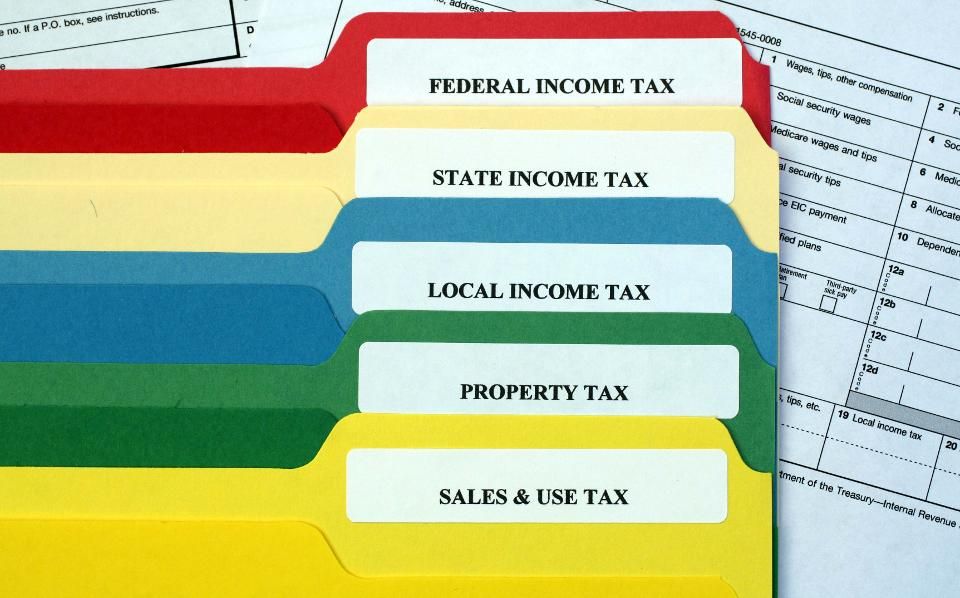Contents:


For operational purposes the organization is cannibalizing funds that were set aside to maintain or extend its capital base. Those who manage and deal with nonprofit institutions should have greater familiarity with the unique requirements of nonprofit financial structures and accounting practices. They should not rely on familiarity with business financial accounting and administration. The Balance Sheet of an organisation is a statement showing its financial position on a particular date. The Balance Sheet prepared by Not-for-Profit organisations is similar to a business firm. The Balance Sheet shows the value of assets, liabilities, and capital funds at the end of the accounting year of the organisation on a particular date.
Generally, you’ll want to have between three and six months of cash on hand to determine that your organization is in a financially stable and healthy position. While your assets are generally organized by liquidity, your liabilities are usually organized by due date. Short-term investments are usually labeled as current liabilities and should be owed within the year. Meanwhile, long-term liabilities represent the obligations that can be paid over multiple years. AVAILABLE NOW – Great Beginnings for New Nonprofits, a free 8-part email course on fundraising, financial management and other “must know” topics.
What are the Most Important Nonprofit Financial Statements
In addition, they provide the basis for board members to ask critical questions that will benefit the organization in the long term. For instance, it helps the nonprofit board understand how the organization is primarily funded and whether the funding sources are growing or shrinking. Plus, it helps throw light on how nonprofits can use the money realized to impact their communities. Interpreting a non-profit balance sheet involves analyzing the relationship between the different components. The total assets should always equal the total liabilities and net assets, as the organization’s assets are financed either by debt or equity . Additionally, the balance sheet provides insight into the organization’s liquidity, or its ability to meet its financial obligations in the short term.
- Understanding the purpose, scope, and intricacies of each type of nonprofit accounting statement is key to success.
- Most importantly, net assets represent the net worth of the organization.
- Daystar Council, an association of nonprofit consultants, points out that the nonprofit balance sheet is more about accountability for sources and uses of funds as opposed to assets and liabilities.
- It enables management to track resources, just as an internal project manager in a corporation tracks the budgeted costs of a program against actual costs.
- There are several documents that nonprofits leverage to determine the best future financial decisions.
Our team of experts specializes in providing non-profit accounting solutions and can help non-profit accountants ensure that their financial statements are prepared in accordance with accounting standards and best practices. The components of notes to financial statements for nonprofits may include information on accounting policies, significant accounting estimates, contingencies, related-party transactions, and other relevant information. Understanding the purpose, scope, and intricacies of each type of nonprofit accounting statement is key to success. Many misconceptions exist in this area, but to deliver accurate, transparent financial statements and returns, you must have a comprehensive understanding of the nonprofit accounting process. So the this section of your statement of financial position has unrestricted funds that can be used for the general benefit of the organization.
Assessing Nonprofits using Financial Statements and RatiosCornell Course
Instead, nonprofits substitute net assets for equity and follow the formula of assets minus liabilities equal net assets, according to accountant and university professor Harold Averkamp. While the for-profit balance sheet shows how much the company is worth to owners if assets are sold and liabilities are paid off, the nonprofit statement shows how much the nonprofit would have available in assets. The set-up of the balance sheet and essential framework are largely the same in a for-profit and nonprofit business. However, basic terminology and account details are different based on the distinct difference in these business types. The for-profit balance sheet represents the intent of the business to earn money for its owners. The nonprofit balance sheet accounts more for the acceptance and use of funds in operating programs.

Technically, the calculation to arrive at Retained Earnings and Net Assets is the same. It is the cumulative Income over Expenses for the life of the organization. But, a nonprofit does not have retained earnings, since they are nonprofit.
Example of Main Difference Between Nonprofit and For-Profit Balance Sheets
There is a fundamental distinction between governmental and commercial accounting. In governmental accounting, benefits do not necessarily flow in as revenues, so there is no inherent connection between revenues and expenses as there is in the commercial model. At the same time, government needs good measures of cost, and needs to integrate those cost measures with levels of taxation so that it and its citizens understand what is really happening at any point in time. Moreover, combining activities of the restricted current fund and the endowment fund would obscure the difference between operating capital and permanent capital. Discretionary transfers may also be made to carry out the board’s strategy. To finance renovation of a building, the directors may transfer a portion of the unrestricted fund balances and the equivalent amount of unrestricted liquid assets to the plant fund.
In a nutshell, the liabilities section of your nonprofit statement of financial position sums up what your organization owes. For instance, this is where you’ll add expenses owed to your employees, vendors, and contractors, as well as any debt your organization may have as an entity. The numbers pulled for your nonprofit balance sheet all come from your organization’s chart of accounts, which lists out all of your accounts and ledgers to keep your finances in order. Then, these numbers are organized into the three sections of the report . Some of the ratio calculations require information that cannot be found on the balance sheet.
170,000 increase in endowment were a gift to a new program that would otherwise not be started, the financial benefits would be quite different from those in this case. 9,850,000, the current ratio is almost 3 to 1, and the small amount of debt could be retired easily by liquidating some marketable securities. Neil Kokemuller has been an active business, finance and education writer and content media website developer since 2007. Kokemuller has additional professional experience in marketing, retail and small business.
Statement of Functional Expenses
To calculate your months of LUNA, you’ll need to take the total unrestricted net assets found on your nonprofit balance sheet and subtract the property and equipment assets . This is because those assets are tied up in physical belongings (property, software, etc.) and cannot be liquidated to cover additional liabilities. Then, divide this number by the average monthly expenses incurred by your organization. The result is the number of months that you can cover with the liquid assets you have on hand.

These net assets are then split up and organized according to the restrictions placed on them. Donors, grant-makers, and government entities all reserve the right to restrict the contributions made to nonprofits so that it can only be used for certain activities or programs. That’s why it’s so important to manage grants and other restricted contributions carefully in your accounting system.
The balance sheet reports the organization’s assets, liabilities, and the difference between the amount of assets and liabilities as of the final instant of the accounting period. In the U.S., the amounts are based on generally accepted accounting principles . As one of the four major nonprofit financial statements, it measures how a nonprofit manages its financial resources. In other words, it tells how your organization generates funds to pay its debt obligation and finance its operating expenses.
Fund accounting requires that organizations keep track of these funds and report them on their Statement of Financial Position. Learn more about the backbone of effective financial statements, your chart of accounts, with this complete guide for nonprofits. Doing so can help you better understand which funds are a leverageable part of your operational budget and can be used to take on additional risk, such as expanding the organization. You can do this by calculating the months of cash and assets that your organization has on hand to pay for items outside of your usual expenses. There are several insights that you can pull from your nonprofit statement of financial position.
Assets = Liabilities + Net Assets
Chances are you’ve looked at your trial balance’s profit and loss report and never thought much about the balance sheet. Provides a summary of an organization’s financial performance that can be easily understood by stakeholders, such as donors and board members. Whether nonprofit or for-profit SMB, the impact of inaccurate or late financial information can have a devastating effect on the organization’s long-term financial health. At GrowthForce, we specialize in helping both types of organizations keep their finger on their financial pulse, so they can focus on what really matters – achieving their greatest potential. A for-profit company’s balance sheet takes a snapshot of the company’s assets and liabilities .
SVB bulked up with 2 Mass. companies. Now they’re caught up in its … – WBUR News
SVB bulked up with 2 Mass. companies. Now they’re caught up in its ….
Posted: Fri, 17 Mar 2023 07:00:00 GMT [source]
Indeed, https://1investing.in/ accounting originated in the thirteenth century as a result of the Magna Carta, which affirmed the rights of the English lords over the monarchy . The purpose of fund accounting and budgetary accounting—to help the legislature maintain control over the executive branch—has not changed in the intervening 700 years. Most of them agree that the accounting structure for nonprofit institutions is unnecessarily complex, that the complexity inhibits intelligent financial analysis and management, and that drastic simplification of the financial statements is needed. This is an incredibly important part of the nonprofit statement of financial position. It defines the net assets that you have available to conduct operations at your organization. For example, if you have a donation that’s restricted permanently for a certain program, you won’t have the flexibility to use that funding to increase a valuable employee’s salary or support other pressing operational expenses.
Second, many nonprofit organizations, particularly those in government, combine their financial accounting with their budgetary systems. They report actual revenues and expenditures and compare them with those budgeted. Anticipated expenditures are based on purchase orders, whose total is recognized as an encumbrance or obligation against the budget. Some accountants claim that this encumbrance accounting confuses the reader of the statement.
A few pieces may need to be found on the income statement or other financial statements. This means we as board members should understand those financial statements we’re looking at. We should be looking at internally prepared financial statements at least quarterly, per the Standards for Excellence Institute®, which provides guidance on best practices. We should be reviewing the audit and seeing the IRS Form 990 before it is filed. If you serve on a nonprofit board, you’ve probably seen those fellow members who look like a deer in the headlights when presented with financial statements.
We have noticed in working with clients that people often relate to accounting the same way they relate to their checkbook. In this framework, money going out is an expense and money coming in is income. Finance Unlocked for Nonprofits, which intentionally abbreviates to FUN, was created to bring fun to finance. Each board member has their own personal experiences with finance that may range from excitement to mixed feelings to uneasiness. The feelings and perceptions you may carry shape how you approach your relationship to nonprofit finance. Approaching nonprofit finance in a welcoming way, Finance Unlocked for Nonprofits aims to help unlock your financial literacy.
In other words, your nonprofit must exclusively use temporarily restricted net assets for specified purposes in a given period. An organization can use unrestricted net assets for general purposes, such as funding operational expenses. The third item on any balance sheet should show the difference between assets and liabilities—the total financial gain or loss. The net assets of a nonprofit balance sheet signify the departure from for-profit bookkeeping.

